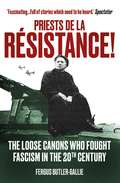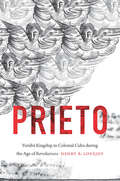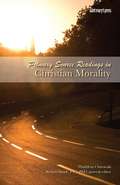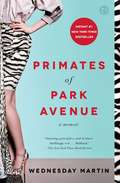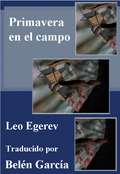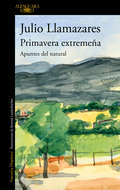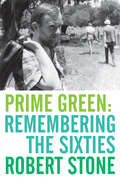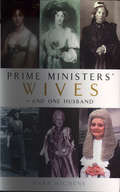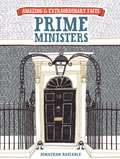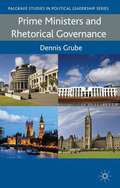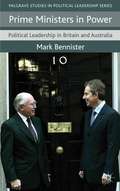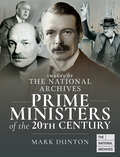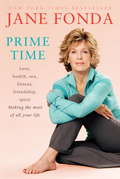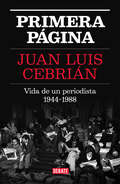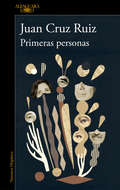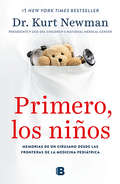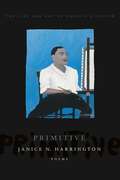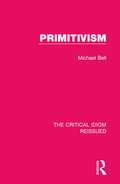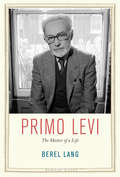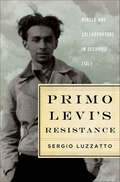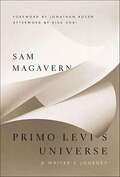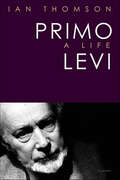- Table View
- List View
Priests de la Résistance!: The loose canons who fought Fascism in the twentieth century
by The Revd Butler-GallieWhoever said that Christians had to be meek and mild hadn&’t met Father Kir – parish priest and French resistance hero, immortalised by the Kir Royale. And they probably weren&’t thinking of Archbishop Damaskinos who, when threatened with the firing squad by the Nazis, replied, &‘Please respect our traditions – in Greece we hang our Archbishops.&’ Wherever fascism has taken root, it has met with resistance. From taking a bullet for a frightened schoolgirl in Alabama to riding on the bonnet of a tank during the liberation of France, each of the hard-drinking, chain-smoking clerics featured in Priests de la Résistance were willing to give their lives for a world they believed in – even as their superiors beckoned them to safety. In this spellbinding new collection, the Reverend Fergus Butler-Gallie, bestselling author of A Field Guide to the English Clergy, presents fifteen men and women who dared to stand up to fascism, proving that some hearts will never be conquered.
Prieto: Yorùbá Kingship in Colonial Cuba during the Age of Revolutions (Envisioning Cuba)
by Henry B. LovejoyThis Atlantic world history centers on the life of Juan Nepomuceno Prieto (c. 1773–c. 1835), a member of the West African Yoruba people enslaved and taken to Havana during the era of the Atlantic slave trade. Richly situating Prieto's story within the context of colonial Cuba, Henry B. Lovejoy illuminates the vast process by which thousands of Yoruba speakers were forced into life-and-death struggles in a strange land. In Havana, Prieto and most of the people of the Yoruba diaspora were identified by the colonial authorities as Lucumi. Prieto's evolving identity becomes the fascinating fulcrum of the book. Drafted as an enslaved soldier for Spain, Prieto achieved self-manumission while still in the military. Rising steadily in his dangerous new world, he became the religious leader of Havana's most famous Lucumi cabildo, where he contributed to the development of the Afro-Cuban religion of Santeria. Then he was arrested on suspicion of fomenting slave rebellion. Trial testimony shows that he fell ill, but his ultimate fate is unknown. Despite the silences and contradictions that will never be fully resolved, Prieto's life opens a window onto how Africans creatively developed multiple forms of identity and resistance in Cuba and in the Atlantic world more broadly.
Primary Source Readings in Christian Morality
by Thaddeus Ostrowski Robert J. SmithPrimary Source Readings in Christian Morality presents the living words of the Catholic Church and the wisdom of everyday people addressing the moral issues that impact our lives. This book of primary source readings will help students realize the connection between behavior and character. Additionally, students will uncover that the road to authentic happiness and joy involves working on their relationship with God. Within this book you will find writings from Pope Benedict XVI The Second Vatican Council Richard Gula, SS Pope Paul VI Ronald Rohlheiser Erich Maria Remarque Pope John Paul II The United States Conference of Catholic Bishops.
Primates of Park Avenue: A Memoir
by Wednesday MartinLike an urban Dian Fossey, Wednesday Martin decodes the primate social behaviors of Upper East Side mothers in a brilliantly original and witty memoir about her adventures assimilating into that most secretive and elite tribe.After marrying a man from the Upper East Side and moving to the neighborhood, Wednesday Martin struggled to fit in. Drawing on her background in anthropology and primatology, she tried looking at her new world through that lens, and suddenly things fell into place. She understood the other mothers' snobbiness at school drop-off when she compared them to olive baboons. Her obsessional quest for a Hermes Birkin handbag made sense when she realized other females wielded them to establish dominance in their troop. And so she analyzed tribal migration patterns; display rituals; physical adornment, mutilation, and mating practices; extra-pair copulation; and more. Her conclusions are smart, thought-provoking, and hilariously unexpected. Every city has its Upper East Side, and in Wednesday's memoir, readers everywhere will recognize the strange cultural codes of powerful social hierarchies and the compelling desire to climb them. They will also see that Upper East Side mothers want the same things for their children that all mothers want--safety, happiness, and success--and not even sky-high penthouses and chauffeured SUVs can protect this ecologically released tribe from the universal experiences of anxiety and loss. When Wednesday's life turns upside down, she learns how deep the bonds of female friendship really are. Intelligent, funny, and heartfelt, Primates of Park Avenue lifts a veil on a secret, elite world within a world--the exotic, fascinating, and strangely familiar culture of privileged Manhattan motherhood.
Primavera en el campo
by Leo EgerevPrimavera en el campo consta de varias historias breves basadas en la vida del autor durante su infancia y juventud en la Rusia de los años 60, 70 y 80, con relatos sobre sus años en el servicio militar y sus viajes de trabajo por todo el país, entre otros. Leo Egerev comparte con el lector una miríada de vivencias divertidas, extravagantes y muy humanas, donde nos da a conocer las personas que enriquecieron su vida y el recuerdo de aquellos que le animaron a escribir este libro.
Primavera extremeña: Apuntes del natural
by Julio LlamazaresLa literatura y el arte se unen en el nuevo libro de Julio Llamazares, uno de los escritores españoles más destacados de la actualidad «Mientras el mundo se desmoronaba, la naturaleza volvía a revivir igual que cada año al llegar la primavera.» En marzo de 2020, días antes de que toda España quedara confinada, el autor se instaló con su familia en una casa situada en la sierra de los Lagares, cerca de Trujillo, en Extremadura. Allí estuvieron, como los personajes del Decameron, recluidos durante tres meses en un lugar que les regaló la primavera más bella que vivieron nunca. Durante ese tiempo, la naturaleza, preservada de la intervención humana, se llenó de luz, de colores brillantes y de animales en libertad, mientras la tragedia de la pandemia seextendía implacable. Y es que la vida, pese a todo, consigue abrirse paso entre las grietas de la realidad, por angostas que sean. En este libro se entrelazan dos lenguajes para narrar una primavera tan inesperada como cruel y hermosa: el de la prosa sugerente de Julio Llamazares y el de las evocadoras acuarelas de Konrad Laudenbacher, amigo y vecino del autor. Una vez más, como siempre ha ocurrido, el arte y la literatura aparecen para ofrecer consuelo y un conjuro que intenta detener el dolor del mundo. La primavera recobrada. La crítica ha dicho:«Julio Llamazares es un verdadero viajero: persigue un objetivo y regresa enriquecido de él.»Cees Nooteboom «Julio Llamazares es, sin duda, uno de esos escritores que nos reconcilian con el ejercicio de la literatura.»Aurelio Loureiro, Leer «Julio Llamazares sigue siendo un escritor especial, alguien capaz de mirar el mundo de otra manera.»El Correo Gallego «A Julio Llamazares, uno de nuestros escritores más honestos y versátiles, le gusta echarse al camino y contarnos lo que ve, escucha y siente. [...] Sus relatos viajeros filtran una prosa muy singular, lírica y exacta a la vez, y son, a mi juicio, de lo mejor que se ha escrito en España desde los presupuestos del género.»José Luis Argüelles, La Nueva España «Llamazares siempre escribe igual cuando viaja, habría que añadir también que siempre escribe bien, sin arrogancia, desprejuiciadamente, con sentido del humor y con cariñosa indulgencia cuando retrata. Y tal vez sea ésa la clave [...]. El autor está enamorado de lo que describe y de lo que descubre.»Andrés Barba, El Cultural
Prime Green: Remembering the Sixties
by Robert StoneFrom the New York City of Kline and De Kooning to the jazz era of New Orleans's French Quarter, to Ken Kesey's psychedelic California, Prime Green explores the 1960s in all its weird, innocent, turbulent, and fascinating glory. Building on personal vignettes from Robert Stone's travels across America, the legendary novelist offers not only a riveting and powerful memoir but also an unforgettable inside perspective on a unique moment in American history.
Prime Minister's Wives
by Mark HichensMuch is required of a prime minister's wife. As a hostess, sympathetic ear and adviser, she must ensure her husband never puts a foot wrong (and never do so herself). Arguably she has one of the hardest jobs in politics - without ever stepping into the House of Commons.Of the wives from the past two centuries featured in this book, nearly all have given their husbands unqualified support in political matters, two notable exceptions being Emily Palmerston and Clementine Churchill, who were always ready to dissent. And, until Audrey Callaghan and Cherie Blair, none had careers of their own. They came from a variety of backgrounds: some, such as Emily Palmerston, Caroline Lamb, Catherine Gladstone and Dorothy Macmillan, from the ruling classes. Two - Clementine Churchill and Margot Asquith - had aristocratic connections, while Lucy Baldwin's father was a scientist, Mary Ann Disraeli's was a junior naval officer and Margaret Lloyd George's a Welsh hill farmer. In terms of their marriages, some were secure, some wobbly and one actually broke down. In the case of Clementine Churchill, her marriage to Winston of fifty-seven years was a particularly remarkable achievement.Mark Hichens examines these women - and one husband, Denis Thatcher - in the light of their personalities and achievements as well as the roles they have indirectly played in British history in this timely volume.
Prime Ministers
by Jonathan Bastable"Amazing & Extraordinary Facts: British Prime Ministers" delves into the premiership's 300 year history and unearths a host of fascinating, intriguing and little-known facts about some of the best-known characters in British history, lifting the lid on the top job. Find out about the Prime Minister who only lasted 100 days, another who served for 21 years, or how Downing Street came to be the Premier's residence. Brief, accessible and entertaining pieces on a wide variety of subjects makes it the perfect book to dip in to. "The Amazing and Extraordinary Facts series" presents interesting, surprising and little-known facts and stories about a wide range of topics which are guaranteed to inform, absorb and entertain in equal measure.
Prime Ministers and Rhetorical Governance
by Dennis GrubeIt is a well-known fact that Prime ministers are fond of talking, in fact at times it seems impossible to get them to do anything else. The reason for this constant talking is that Prime Ministers are all too aware of the importance of frequently talking to and communicating with the electorate. Political rhetoric has a central function that goes far beyond the need to rouse people at election time or in times of great crisis but rather persuasive political talk by prime ministers is central to the practice of modern government itself. This book argues that there are institutionalised patterns in the speeches that prime ministers give. Like an old-style jukebox, there are only a certain number of records in the prime ministerial machine. Inevitably, each prime minister will play the same songs in the same order as their predecessor. This repetitive rhetoric has an impact not just on the minds of voters, but also on day-to-day governance in Westminster system democracies.
Prime Ministers in Power
by Mark BennisterTony Blair and John Howard appear to be incongruous choices for comparative analysis. Howard was from the ideological right of Australian politics, with a leadership style based on experience and an uncharismatic, cautious, bureaucratic persona. Blair was the charismatic, new progressive centre-left leader with an emotional, thespian style, stressing vision and moral imperatives. Yet, it is possible to identify both personal and institutional similarities. This book argues that both leaders stretched the institutional resources available to them and enhanced their own personal capital. Over time, the political capital generated by each inevitably fell away to the extent that they both (although for contrasting reasons) left office in 2007. Prime Ministers in Powerinvestigates prime ministerial predominance in Britain and Australia. It is a timely addition to the scholarly material on political leadership, adding a comparative dimension by using case study analysis of two prime ministers in similar political systems. How did these two prime ministers establish such predominant positions? How far can prime ministers stretch the institutions within which they work and how much of an impact does the office-holder have on the office? What conclusions can be drawn from the comparison of the two prime ministers? What are the consequences and costs of such predominance? This book addresses these questions, offering a comparative perspective on the nature of prime ministerial leadership.
Prime Ministers of the 20th Century (Images of the The National Archives)
by Mark DuntonA concise history of each of the UK’s twentieth-century Prime Ministers, from Robert Gascoyne-Cecil to Tony Blair, featuring archival images and documents.This book gives an overview of each of the British Prime Ministers of the twentieth century, summarising their premierships, their policies, and the key events. It is lavishly illustrated with images of documents from The National Archives which give a fresh dimension to the study of the Prime Minister’s role, providing insights into their personalities and the pressures that Prime Ministers are subject to. Handwritten comments by Prime Ministers enable the reader to connect with the individual and how they felt at the time. There are dramatic episodes and examples of forthright reactions, but flashes of humour too.
Prime Obsession: Bernhard Riemann and the Greatest Unsolved Problem in Mathematics
by John DerbyshireIn August 1859 Bernhard Riemann, a little-known 32-year old mathematician, presented a paper to the Berlin Academy titled: "On the Number of Prime Numbers Less Than a Given Quantity." In the middle of that paper, Riemann made an incidental remark -- a guess, a hypothesis. What he tossed out to the assembled mathematicians that day has proven to be almost cruelly compelling to countless scholars in the ensuing years. Today, after 150 years of careful research and exhaustive study, the question remains. Is the hypothesis true or false? Riemann's basic inquiry, the primary topic of his paper, concerned a straightforward but nevertheless important matter of arithmetic -- defining a precise formula to track and identify the occurrence of prime numbers. But it is that incidental remark -- the Riemann Hypothesis -- that is the truly astonishing legacy of his 1859 paper. Because Riemann was able to see beyond the pattern of the primes to discern traces of something mysterious and mathematically elegant shrouded in the shadows -- subtle variations in the distribution of those prime numbers. Brilliant for its clarity, astounding for its potential consequences, the Hypothesis took on enormous importance in mathematics. Indeed, the successful solution to this puzzle would herald a revolution in prime number theory. Proving or disproving it became the greatest challenge of the age.--It has become clear that the Riemann Hypothesis, whose resolution seems to hang tantalizingly just beyond our grasp, holds the key to a variety of scientific and mathematical investigations. The making and breaking of modern codes, which depend on the properties of the prime numbers, have roots in the Hypothesis. In a series of extraordinary developments during the 1970s, it emerged that even the physics of the atomic nucleus is connected in ways not yet fully understood to this strange conundrum. Hunting down the solution to the Riemann Hypothesis has become an obsession for many -- the veritable "great white whale" of mathematical research. Yet despite determined efforts by generations of mathematicians, the Riemann Hypothesis defies resolution. Alternating passages of extraordinarily lucid mathematical exposition with chapters of elegantly composed biography and history, Prime Obsession is a fascinating and fluent account of an epic mathematical mystery that continues to challenge and excite the world. Posited a century and a half ago, the Riemann Hypothesis is an intellectual feast for the cognoscenti and the curious alike. Not just a story of numbers and calculations, Prime Obsession is the engrossing tale of a relentless hunt for an elusive proof -- and those who have been consumed by it.
Prime Time (with Bonus Content)
by Jane FondaBONUS: This eBook includes the full text of the book plus 50 photographs not found in the print version.In this inspiring and candid book, Jane Fonda, #1 bestselling author, actress, and workout pioneer, gives us a blueprint for living well and for making the most of life, especially the second half of it. Covering sex, love, food, fitness, self-understanding, spiritual and social growth, and your brain. In Prime Time, she offers a vision for successful living and maturing, A to Z.Highlighting new research and stories from her own life and from the lives of others, Jane Fonda explores how the critical years from 45 and 50, and especially from 60 and beyond, can be times when we truly become the energetic, loving, fulfilled people we were meant to be. Covering the 11 key ingredients for vital living, Fonda invites you to consider with her how to live a more insightful, healthy, and fully integrated life, a life lived more profoundly in touch with ourselves, our bodies, minds, and spirits, and with our talents, friends, and communities. In her research, Fonda discovered two metaphors, the arch and the staircase, that became for her two visions of life. She shows how to see your life the "staircase" way, as one of continual ascent. She explains how she came to understand the earlier decades of her life by performing a life review, and she shows how you can do a life review too. She reveals how her own life review enabled her to let go of old patterns, to see what means the most to her, and then to cultivate new goals and dreams, to make the most of the mature years. For there has been a "longevity revolution," and the average human life expectancy has jumped by years. Fonda asks, what we are meant to do with this precious gift of time? And she writes about how we can navigate the "fertile voids" that life periodically presents to us. She makes suggestions about exercise (including three key movements for optimal health), diet (how to eat by color), meditation, and how learning new things and creating fresh pathways in your brain can add quality to your life. Fonda writes of positivity, and why many people are happier in the second half of their lives than they have ever been before.In her #1 New York Times bestselling memoir, My Life So Far, Jane Fonda focused on the first half of her extraordinary life--what she called Acts I and II--with an eye toward preparing for a vibrant Act III. Now we have a thoughtfully articulated memoir and guide for how to make all of your life, and especially Act III, Prime Time.
Prime Time (with Bonus Content): Love, health, sex, fitness, friendship, spirit; Making the most of all of your life
by Jane FondaBONUS: This eBook includes the full text of the book plus 50 photographs not found in the print version.In this inspiring and candid book, Jane Fonda, #1 bestselling author, actress, and workout pioneer, gives us a blueprint for living well and for making the most of life, especially the second half of it. Covering sex, love, food, fitness, self-understanding, spiritual and social growth, and your brain. In Prime Time, she offers a vision for successful living and maturing, A to Z.Highlighting new research and stories from her own life and from the lives of others, Jane Fonda explores how the critical years from 45 and 50, and especially from 60 and beyond, can be times when we truly become the energetic, loving, fulfilled people we were meant to be. Covering the 11 key ingredients for vital living, Fonda invites you to consider with her how to live a more insightful, healthy, and fully integrated life, a life lived more profoundly in touch with ourselves, our bodies, minds, and spirits, and with our talents, friends, and communities. In her research, Fonda discovered two metaphors, the arch and the staircase, that became for her two visions of life. She shows how to see your life the "staircase" way, as one of continual ascent. She explains how she came to understand the earlier decades of her life by performing a life review, and she shows how you can do a life review too. She reveals how her own life review enabled her to let go of old patterns, to see what means the most to her, and then to cultivate new goals and dreams, to make the most of the mature years. For there has been a "longevity revolution," and the average human life expectancy has jumped by years. Fonda asks, what we are meant to do with this precious gift of time? And she writes about how we can navigate the "fertile voids" that life periodically presents to us. She makes suggestions about exercise (including three key movements for optimal health), diet (how to eat by color), meditation, and how learning new things and creating fresh pathways in your brain can add quality to your life. Fonda writes of positivity, and why many people are happier in the second half of their lives than they have ever been before.In her #1 New York Times bestselling memoir, My Life So Far, Jane Fonda focused on the first half of her extraordinary life--what she called Acts I and II--with an eye toward preparing for a vibrant Act III. Now we have a thoughtfully articulated memoir and guide for how to make all of your life, and especially Act III, Prime Time.
Primera Memoria
by Ana Maria MatuteCon la guerra civil, «lejana y próxima a un tiempo, quizás más temida por invisible», como telón de fondo, Primera memoria, Premio Nadal 1959, narra el paso de la niñez a la adolescencia de Matia ―la protagonista― y de su primo Borja. Los dos viven en casa de su abuela en un mundo insular ingenuo y misterioso a la vez. A través de la visión particularísima de la muchacha ―sin madre y con padre desaparecido― asistimos a su despertar a la adolescencia, cuando, roto el caparazón de la niñez, ciega y asombra y hasta a veces duele el fuerte resplandor de la realidad. Una intensa galería de personajes constituye el contrapunto de su vertiginosa sucesión de sensaciones. Y es que en unos meses, Matia descubrirá muchas cosas sobre «la oscura vida de las personas mayores». Melancólica elegía de la perversión de la inocencia, Primera memoria es, sin lugar a dudas, una de las mejores novelas de Ana María Matute.
Primera página: Vida de un periodista 1944-1988
by Juan Luis CebriánPrimera página son las memorias de Juan Luis Cebrián, primer director de El País, pero también el apasionante relato de los convulsos años que llevaron a España de una sangrienta y rancia dictadura a la democracia, contado por un testigo imprescindible. Nacido en Madrid en 1944, en una familia de periodistas, Juan Luis Cebrían pronto empezó a pisar las principales redacciones de la prensa de la época, primero la de Pueblo, luego la de Informaciones, donde fue subdirector con apenas 20 años, y también la de Cuadernos para el diálogo, cuyo espíritu fue un ensayo de la convivencia que haría posible la transición. Tras un fugaz paso por la dirección de informativos de RTVE, fue el primer director de El País, que pronto se convirtió en el periódico de referencia de España y símbolo de la reconquista de las libertades y la aspiración a una sociedad moderna y europea. Fueron años muy intensos que Cebrián vivió en primera línea, con secuestros de empresarios, atentados contra las redacciones, tensión en las calles, guerras soterradas por el control de un medio de comunicación que se hacía cada vez más poderoso, y hasta un golpe de Estado que amenazó con descarrilar el tren de la democracia. «Naturalmente, los hechos aquí relatados son todos ciertos, lo que no quiere decir que la versión de los mismos sea la única posible. He descrito mis relaciones con el poder, mis visiones profesionales, mis convicciones intelectuales. No pretendo que este sea un documento histórico, tampoco un ditirambo autocomplaciente ni emprender una saga de pequeñas venganzas contra nadie. Tampoco voy ahora a establecer verdades absolutas en las que no creo. Trato solo de explicar mis sentimientos, mis reacciones, mis apegos y desapegos en las vicisitudes varias en las que la vida me ha puesto.»Juan Luis Cebrián Primera página, que se lee con la tensión de una novela de aventuras, es un testimonio imprescindible de un periodo crucial de la historia reciente de España.
Primeras personas
by Juan Cruz RuizUna memoria personal y apasionante del mundo cultural de las últimas décadas. Por el ganador de los premios Canarias de Literatura, Benito Pérez Armas, Azorín de Novela y Nacional de Periodismo Cultural. «Entre los cristales rotos de mi memoria hay fulgores, estrellas con las que a veces alumbro y alivio los desastres y otras despedidas. Y con frecuencia acuden a ella, por su cuenta, algunos personajes y se instalan ahí.» «La materia de la que está hecha mi memoria es mi manera de ver la realidad», dijo en una ocasión Juan Cruz Ruiz, figura puente entre distintas generaciones de escritores, artistas, editores y periodistas. Desde la experiencia vivida junto a algunos de los principales protagonistas de la cultura contemporánea, llena de anécdotas, de momentos únicos que forjaron amistades, en cada capítulo de este libro el autor ofrece la semblanza personal de uno de ellos, que ahonda en su personalidad íntima y dibuja también su alma, instantes de sus vidas y de sus sentimientos. Günter Grass, Patti Smith, José Saramago, Dulce Chacón, José Manuel Caballero Bonald, J. K. Rowling, Carlos Fuentes, Carmen Balcells, Mario Vargas Llosa, Leonard Cohen, Gabriel García Márquez, Ingmar Bergman... La literatura, la música, el cine y el arte emanados de este libro rompen las fronteras y atraviesan décadas para ofrecernos un relato evocador y brillante sobre el mundo cultural de los últimos cincuenta años. La crítica ha dicho sobre el autor y su obra:«Los libros de Juan Cruz Ruiz son una alianza de géneros, en los que el lirismo, el relato, la introspección y la nostalgia juntan poesía y prosa.»Mario Vargas Llosa «Tiene un estilo cálido y brillante.»José Saramago «La pasión por la vida y la escritura y el deslumbramiento ante la belleza son aspectos muy presentes en el universo narrativo de Juan Cruz.»Qué Leer «Geografía lírica de la memoria. La fabulación novelesca, el fragmento poético, el relato de los sueños, la reflexión y el retrato. El periodista y escritor Juan Cruz ha recurrido a los más diversos géneros literarios a la hora de repasar fragmentariamente sus propios recuerdos.»Jordi Gracia, Babelia «Juan Cruz es el descendiente directo de Ramón Gómez de la Serna: el ribeteador de las palabras. Un hombre que se la pasa preguntando, como García Márquez.»Jorge F. Hernández
Primero, los niños: Memorias de una cirujano desde las fronteras de la medicina pediátrica
by Kurt Newman«Un libro conmovedor para cualquiera que desee comprender las bellezas y los misterios de la salud infantil» WALTER ISAACSON autor de los bestseller Steve Jobs. La biografía y Einstein. Su vida y su universo Cualquiera que haya visto a un niño recuperarse de una herida o de un hueso roto sabe que están hechos para sanar. Y en esta apasionante colección de memorias, el doctor Kurt Newman, líder de la cirugía pediátrica en Estados Unidos, recupera los episodios más extraordinarios de su carrera para mostrarnos la importancia de tratar a los niños como algo más que adultos miniatura. ¿Por qué es importante la atención pediátrica especializada?, ¿cómo pueden contribuir los padres a la recuperación de sus hijos?, ¿qué lecciones debemos aprender sobre la capacidad de sanar de niños y adolescentes? Éstas son algunas de las cuestiones abordadas por el doctor Newman, quien no sólo narra los hitos de la pediatría a lo largo de treinta años de práctica médica, sino que, a través de emotivos relatos y de sus pequeños y heroicos protagonistas, ofrece lecciones de ética profesional y humildad a los futuros profesionales de la medicina. Sin lugar a dudas, Primero, los niños es un libro profundamente humano, capaz de convencernos de que todavía hay mucho que podemos aprender de nuestros niños. «Escribir este libro es una verdadera labor de amor: por la medicina pediátrica, por los valientes niños y sus familias que me inspiran cada día, y por los mentores y amigos que me han guiado a lo largo de mi carrera» DOCTOR KURT NEWMAN
Primitive: The Art and Life of Horace H. Pippin
by Janice N. HarringtonA biographical reflection on the art and life of Horace H. Pippin-the best-known African-American artist of his time-Primitive is a critique on current perceptions surrounding African-American folk art, as well as the absence of key African-American history in present-day curricula. Award-winning poet Janice Harrington connects readers with a fascinating, odds-defying artist, all while underscoring the human need for artistic expression.
Primitivism (The Critical Idiom Reissued #19)
by Michael BellFirst published in 1972, this books examines the subject of primitivism through the study of the work of a number of major writers, including D. H. Lawrence, Herman Melville, Joseph Conrad, T. S. Eliot and James Joyce. It looks at the variety of definitions and uses of primitivism and how the idea has changed over time as well as with each writer. In doing so, it is argued that primitivism denotes, or arises from, a sense of crisis in civilization and it is born of the interplay between the civilized self and the desire to reject or transform it. This book will be of interest to those studying modern literature.
Primo Levi
by Ariella Lang Berel LangIn 1943, twenty-four-year-old Primo Levi had just begun a career in chemistry when, after joining a partisan group, he was captured by the Italian Fascist Militia and deported to Auschwitz. Of the 650 Italian Jews in his transport, he was one of fewer than 25 who survived the eleven months before the camp's liberation. Upon returning to his native Turin, Levi resumed work as a chemist and was employed for thirty years by a company specializing in paints and other chemical coatings. Yet soon after his return to Turin, he also began writing--memoirs, essays, novels, short stories, poetry--and it is for this work that he has won international recognition. His first book, If This Is a Man, issued in 1947 after great difficulty in finding a publisher, remains a landmark document of the twentieth century. Berel Lang's groundbreaking biography shines new light on Levi's role as a major intellectual and literary figure--an important Holocaust writer and witness but also an innovative moral thinker in whom his two roles as chemist and writer converged, providing the "matter" of his life. Levi's writing combined a scientist's attentiveness to structure and detail, an ironic imagination that found in all nature an ingenuity at once inviting and evasive, and a powerful and passionate moral imagination. Lang's approach provides a philosophically acute and nuanced analysis of Levi as thinker, witness, writer, and scientific detective.
Primo Levi's Resistance: Rebels and Collaborators in Occupied Italy
by Sergio LuzzattoA daring investigation of Primo Levi's brief career as a fighter with the Italian Resistance, and the grim secret that haunted his lifeNo other Auschwitz survivor has been as literarily powerful and historically influential as Primo Levi. Yet Levi was not only a victim or a witness. In the fall of 1943, at the very start of the Italian Resistance, he was a fighter, participating in the first attempts to launch guerrilla warfare against occupying Nazi forces. Those three months have been largely overlooked by Levi's biographers; indeed, they went strikingly unmentioned by Levi himself. For the rest of his life he barely acknowledged that autumn in the Alps. But an obscure passage in Levi's The Periodic Table hints that his deportation to Auschwitz was linked directly to an incident from that time: "an ugly secret" that had made him give up the struggle, "extinguishing all will to resist, indeed to live."What did Levi mean by those dramatic lines? Using extensive archival research, Sergio Luzzatto's groundbreaking Primo Levi's Resistance reconstructs the events of 1943 in vivid detail. Just days before Levi was captured, Luzzatto shows, his group summarily executed two teenagers who had sought to join the partisans, deciding the boys were reckless and couldn't be trusted. The brutal episode has been shrouded in silence, but its repercussions would shape Levi's life.Combining investigative flair with profound empathy, Primo Levi's Resistance offers startling insight into the origins of the moral complexity that runs through the work of Primo Levi himself.
Primo Levi's Universe: A Writer's Journey
by Sam MagavernPrimo Levi is best known as a memoirist of Auschwitz, but he was also a scientist, fiction writer, and poet: in short, a Renaissance man. Primo Levi's Universe offers a multi-faceted portrait of the heroic man who turned the concentration camp experience into beautiful yet terrifying literature. Over time, Levi developed an original world-view which he conveyed in his writing. Through careful readings of Levi's works, Sam Magavern finally does justice to his calm rationality, dark poetry, essential beliefs and wit. Levi's art and life are inextricably intertwined, and this book presents them together, allowing each to shed light on the other.
Primo Levi: A Life
by Ian ThomsonPrimo Levi, author of Survival in Auschwitz and The Periodic Table, wrote books that have been called the essential works of humankind. Yet he lived an unremarkable existence, remaining until his death in the house in which he'd been born; managing a paint and varnish factory for thirty years; and tending his invalid mother to the last. Now, in a matchless account, Ian Thomson unravels the strands of a life as improbable as it was influential, the story of the most modest of men who became a universal touchstone of conscience and humanism.Drawing on exclusive access to family members and previously unseen correspondence, Thomson reconstructs the world of Levi's youth--the rhythms of Jewish life in Turin during the Mussolini years--as well as his experience in Auschwitz and difficult reintegration into postwar Italy. Thomson presents Levi in all his facets: his fondness for Louis Armstrong and fast cars, his insomnia and many near-catastrophic work accidents. Finally, he explores the controversy and isolation of Levi's later years, along with the increasing tensions in his life--between his private anguish and gift for friendship; his severe bouts of depression and passion for life and ideas; his pervasive dread and reasoned, pragmatic ethic.Praised in Britain as "the best sort of history" and "a model of its kind," Primo Levi: A Life is certain to take its place as the standard biography and a necessary companion to the works themselves.
